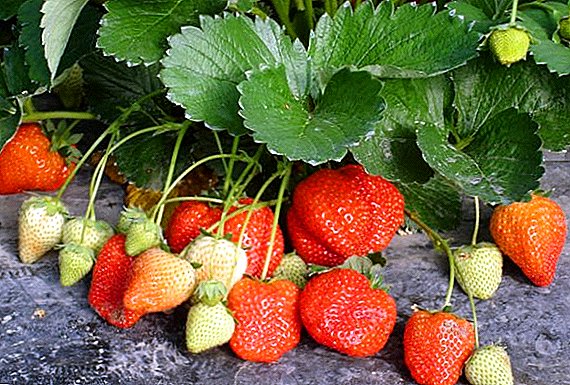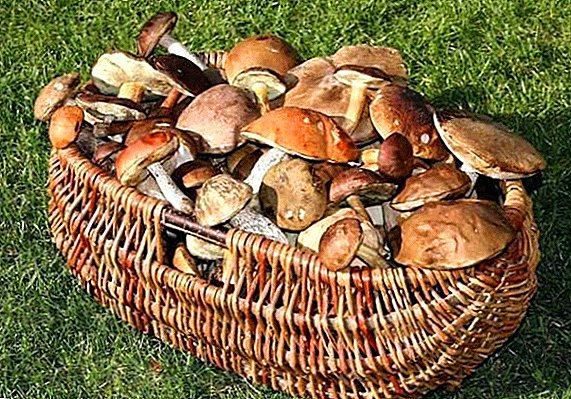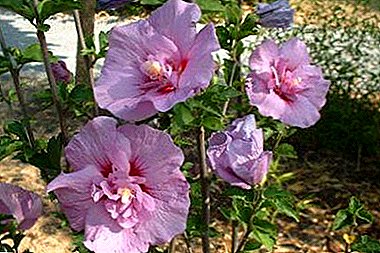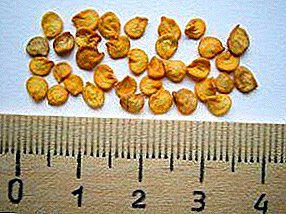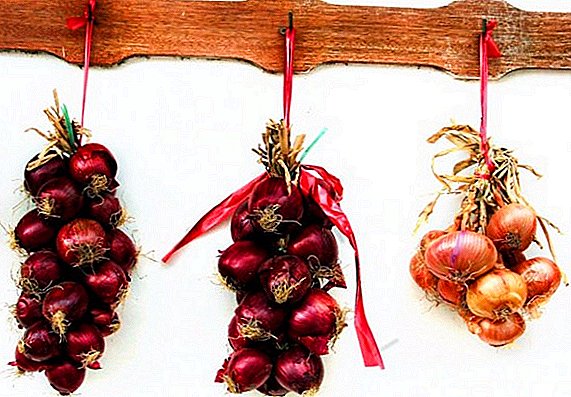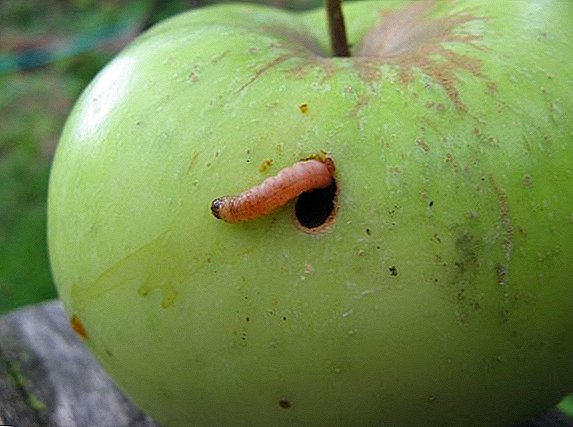 Today no one is protected from such a pest as the moth moth.
Today no one is protected from such a pest as the moth moth.
It rages everywhere, devours harvests both in industrial landings, and on country grounds.
Sometimes the struggle with it is delayed for long months or even years.
A spoiled crop, a lot of effort, time and money spent on the destruction of this parasite - no one wants to go through this. We suggest that you familiarize yourself with effective methods and products from the moth, proven by many owners of orchards, as well as information about the biological cycle of the pest, armed with which you will be to some extent protected.
Codling moth: getting to know the enemy
It is unlikely that the moth butterfly will attract your attention when it appears in the garden. After all, in appearance, it is so inconspicuous that it is absolutely not striking. Moreover, it is not capable of causing special concerns about its harmfulness. However, as is often the case, behind the patronizing color lies a dangerous enemy of fruit harvests.  This is a rather large insect - the size of the codling moth butterfly is 18-21 mm in wingspan. The front wings of the butterfly are dark gray with dark wavy lines located transversely. The rear wings are light brown. When a butterfly lands on a bark or branch of a tree and folds its wings, it becomes almost invisible.
This is a rather large insect - the size of the codling moth butterfly is 18-21 mm in wingspan. The front wings of the butterfly are dark gray with dark wavy lines located transversely. The rear wings are light brown. When a butterfly lands on a bark or branch of a tree and folds its wings, it becomes almost invisible.
To multiply, the moth flies out at night. Its departure occurs during the flowering of apple trees and lasts for 1.5-2 months. 1-3 days after the appearance of the moth plant, it lays on the leaves, shoots, fruits of the milky color of eggs 1 mm in size.
One individual is able to lay 40-120 eggs. In the future, white caterpillars with a black head hatch from them. With age, their color changes to light pink. It is the caterpillars of the codling moth that eat the ovaries, penetrate the fruit, leaving a wormhole.
In one season, the moth appears two or three generations. The greatest danger to fruit trees is the second.
Did you know? The first generation of butterfly moth caterpillars can damage about 25% of the fruit; the second is to destroy 80-90% of the crop.The period of wrecking of caterpillars is 16-45 days. After that, they go to the soil or bark, where they create cocoons for wintering. In the ground, they winter at a depth of 3-10 cm. They also live under plant residues, in containers and in premises where fruits are stored. They pupate in spring when heat is set above 10 degrees.

Did you know? During May and until the end of September, the moth may occur in all stages of development. Butterflies of the first and second generation lay eggs throughout the summer period. This makes it very difficult to fight a pest.
Harm from moth
The moth harm not only the apple trees, plums, pears, quinces, apricots, and peaches also suffer from its vital activity.
The caterpillars enter the fetus through the pedunculated recess, damage on the peel, under the cover of the leaf. In the place where the worm penetrated, rot appears. It is provoked by bacteria that carry caterpillars on their bodies. Later, damaged fruits are chosen by wasps.
Adult caterpillars of the last generation, crawling from one to another fruit, eat their flesh. Thus, one individual can spoil two or three fruits, and sometimes even five.
If a damaged fruit falls to the ground, within one or two days it moves from it to the trunk in order to continue its harmful activity in other fruits on the tree. 
Now you have an idea of what the moth is and how much damage it can cause to fruiting apples and other fruit trees.
Next, we offer you a description of several ways how to get rid of it. However, you need to understand that the use of one of them is unlikely to help you cope with the problem. Only an integrated approach is able to give the desired results.
Preventive actions
There are three ways to deal with the moth and its caterpillars in the garden plot:
- agrotechnical;
- biological;
- chemical.

It is necessary to get rid of plant residues, in which caterpillars can also hibernate. In early spring and autumn, the treatment requires bark of trees. Old sites, suspected locations of pupae, are subject to removal. The removed bark needs to be burned.
Do not ignore the drop. It is necessary to select more often.
Grassy plants that attract insects, natural enemies of caterpillars, can be planted in close proximity. Also, with the help of equipment feeders in the garden attract insectivorous birds.
Butterflies can not stand the smell of tomatoes. Therefore, you can scare them away from the garden by planting tomatoes or mustard, dill nearby.
In the summer you can use it as protection from the moth moth trapping belts. They are made as follows. Stripes of 25-30 cm are cut from paper, cloth, burlap. They need to wrap a tree trunk at a distance of 30-40 cm from the ground. Top trap tied with string. Do not attach below. 
Caterpillars, making their way to the fruit in the trunk below, will fall into the trap. They will need to be extracted and destroyed. Traps can be impregnated with tracked glue. If the tree is more than 20 years old, you can also coat the material or paper with betanaftol.
As a trap, you can use the usual sticky tape for catching flies. Inspection of trapping belts is desirable to produce at least once a week.
Butterflies can be caught manually. As they fly out at night, they are attracted by the bright light, and then they are caught and destroyed. Under the light source you can arrange a trap with adhesive tape or sticky paper.
After collecting the fruits, the containers where they are stored are covered with corrugated paper. Caterpillars will leave it. Containers should be without gaps, tightly closed. Subsequently, the caterpillar paper is removed and burned. A container from under the apples is cleaned and treated with boiling water.
Folk methods of struggle
 For many years of confrontation with the moth on an apple tree, gardeners have tried many methods of struggle, including folk remedies. The most commonly used spraying infusions and decoctions of insecticidal herbs: tansy, burdock, wormwood. Processed coniferous, tobacco broth. These tools have a deterrent effect.
For many years of confrontation with the moth on an apple tree, gardeners have tried many methods of struggle, including folk remedies. The most commonly used spraying infusions and decoctions of insecticidal herbs: tansy, burdock, wormwood. Processed coniferous, tobacco broth. These tools have a deterrent effect.
The first spraying of infusions and decoctions is done when the apple tree blossoms. Subsequent two treatments are at two-week intervals. Spraying is carried out in the evening in windless dry weather.
Tobacco decoction prepared from a pound of dry tobacco. It must be infused for 10 days in 10 liters of water. After boiling for two hours. After the broth cools, another bucket of water is added to it. Immediately before use, 50 g of soap is added to the solution. Trees are treated during the mass birth of caterpillars.
Important! Since tobacco has toxic properties, it is necessary to observe the same personal safety measures when treating trees with tobacco decoction as with insecticide spraying.Can cook decoction of wormwood. Grass (1 kg) pour 1 l of water and boil for 20 minutes. After the broth is cooled, a bucket of water is added to it.
 Also effective against moth is decoction of red pepper. It is prepared as follows. Take a pound of pepper pods, pour 2 liters of water, boil for an hour in a saucepan with a lid. Then the broth insist for two days. After that filter.
Also effective against moth is decoction of red pepper. It is prepared as follows. Take a pound of pepper pods, pour 2 liters of water, boil for an hour in a saucepan with a lid. Then the broth insist for two days. After that filter.
For spraying, use half a liter of broth, combined with 10 liters of water and 50 g of soap. The remaining liquid is stored in a closed bottle.
Its scaring properties are known and tomato infusion. For its preparation use 4 kg of chopped tomatoes (tops, roots, green fruits), 10 liters of water. The solution is boiled for half an hour, then filtered. For spraying, take 3 liters of prepared liquid, 10 liters of water and 50 g of soap.
Moth chemical preparations
Chemical preparations are used only in the case of mass destruction by codling moth. When spraying apple trees from the moth, you can find out with the help of the pheromone trap, which must be placed on the garden plot. If more than five butterflies fall into it within a week, it means that we cannot do without chemical treatment of trees.
Of course, it is advisable not to bring the situation to the point where it is necessary to apply chemistry. Use at first sparing methods of struggle. If they did not help, then choose the most environmentally friendly drug.
 For severe infections, four treatments are recommended. The first spraying should be carried out during the departure of the butterflies, the second - in two weeks, the third - two weeks after the previous one, the fourth - after the harvest.
For severe infections, four treatments are recommended. The first spraying should be carried out during the departure of the butterflies, the second - in two weeks, the third - two weeks after the previous one, the fourth - after the harvest.
There are many drugs that can destroy the caterpillar caterpillars. Chemical, biological and viral agents have been developed.
Such insecticides, such as "Atom", "Binom", "Ditox", "Zolon", "Fufanon", "Sirocco", "Iskra-M", "Decis", etc., from moth is used most often. They are able to kill caterpillars in the period from the release from the egg to the introduction into the fetus. It is during this period that they need to process the trees.
Permitted use against moth pyrethroid drugs: "Ivanhoe", "Calypso", "Sumi-alpha", "Kinmiks", "Fatrin", "Alatar". This group is used for processing 8-10 days after the departure of butterflies.
Important! Before you treat the apple tree moth, try using the tool on a single plant. If during the day no side effect has occurred, you can proceed to the processing of the remaining trees.
 Also apple trees are treated cygalotora: "Karate Zeon", "Kungfu", "Sensei", "Gladiator", "Borey".
Also apple trees are treated cygalotora: "Karate Zeon", "Kungfu", "Sensei", "Gladiator", "Borey".In the fight with moths use growth regulators "Dimilin", "Match", "Herald", "Insegar".
From biological preparations effective "Fitoverm" (used in the period from the release of caterpillars from the eggs until they fall into the fruit); "Lepidocide" (during the growing season against each generation, adhering to the interval of 10-14 days), "Bitoxibacillin" (during the growing season against each generation with an interval of a week).
Viral drugs use less often. Allowed: "Madex Twin", "FermoVirin YAP".
Important! In order to cause as little harm as possible, it is recommended to make the first spraying with the help of chemical means, and to apply biological preparations and mechanical methods during subsequent spraying.Completely overcome the moth can only be using several methods in combination. Do not neglect the correct agricultural technology, carry out preventive spraying strictly during the recommended periods, alternate the preparations used, work together with the owners of the neighboring plots, and you no longer have to watch wormy apples in your garden.


